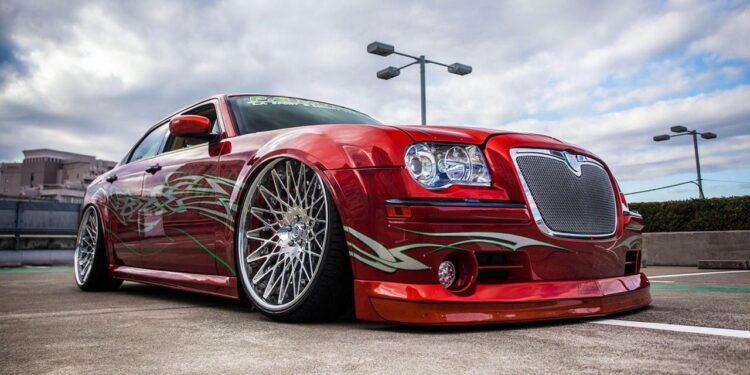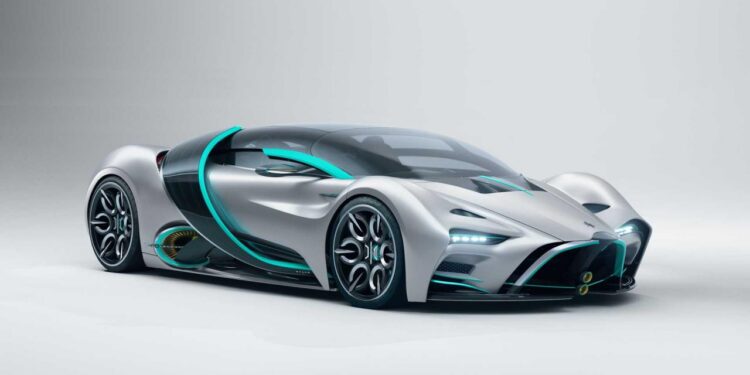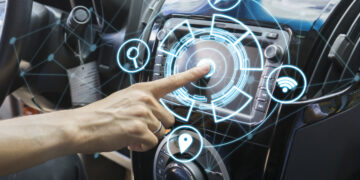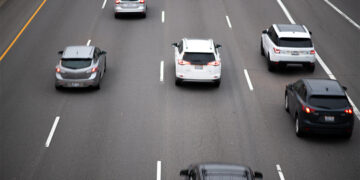For many, a car is far more than just a means of transportation; it’s a reflection of personal style, an extension of identity, and a canvas for creativity. The world of car decoration, or auto aesthetics, is a vibrant and ever-evolving realm, offering countless ways to personalize a vehicle, enhance its appearance, and even boost its functionality. From subtle interior accents to bold exterior modifications, customizing your ride is a powerful way to make a statement, protect your investment, and simply enjoy your vehicle more. This isn’t just about superficial adornment; it’s about making your car uniquely yours, transforming it from a standard model into a bespoke expression of individuality.
The Allure of Personalization
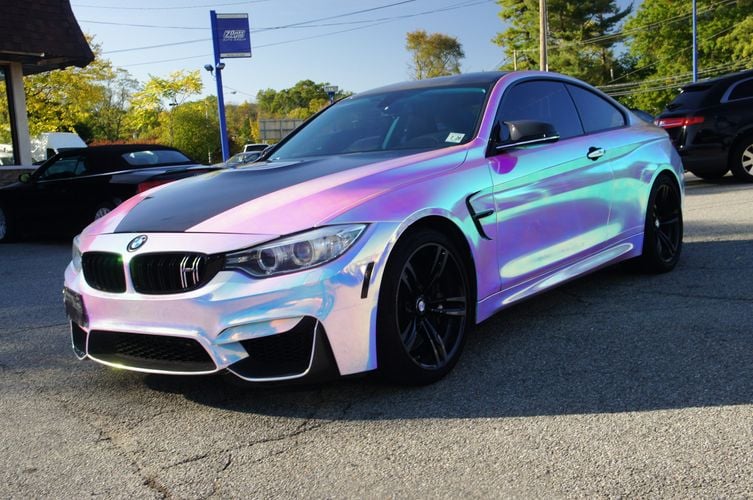
The desire to personalize one’s belongings is deeply human, and cars are no exception. The motivations behind car decoration are diverse, ranging from aesthetic pleasure to practical benefits and the expression of identity.
A. Expressing Individuality and Style:
* Personal Statement: A car can serve as a highly visible extension of a person’s identity, hobbies, or affiliations. Decorations allow owners to showcase their unique taste, passions, or even a sense of humor.
* Standing Out: In a sea of mass-produced vehicles, customization helps a car stand out from the crowd, making it more distinctive and memorable.
* Reflecting Personality: Whether subtle and sophisticated or bold and flamboyant, auto aesthetics enable owners to infuse their personality into their vehicle.
B. Enhancing Aesthetics and Appeal:
* Visual Enhancement: Decorations can improve a car’s overall appearance, adding flair, elegance, sportiness, or a rugged look, depending on the desired outcome.
* Modernizing Older Vehicles: Simple aesthetic upgrades can breathe new life into an older car, making it feel more current and fresh.
* Increasing Resale Value: While not always the case, tasteful and well-executed modifications, especially those that enhance protection or functionality, can sometimes add to a car’s perceived value for future buyers.
C. Protecting and Preserving the Vehicle:
* Surface Protection: Elements like paint protection film, seat covers, and floor mats not only customize but also serve as protective layers against wear and tear, scratches, and spills, preserving the car’s original condition.
* Preventing Damage: Bumper guards, door edge protectors, and mud flaps are decorative yet functional additions that prevent minor damage from daily use.
* UV Protection: Window tints not only look good but also block harmful UV rays, protecting the interior from fading and cracking.
D. Improving Comfort and Functionality:
* Interior Comfort: Seat covers, steering wheel wraps, and custom organizers can enhance comfort and convenience during daily drives.
* Driver Experience: Upgraded infotainment systems, personalized lighting, or advanced dashboard accessories can improve the overall driving experience.
* Practical Utility: Roof racks, cargo organizers, and specialized lighting can add practical utility for hobbies, work, or travel, making the car more versatile.
E. Community and Affiliation:
* Car Enthusiast Culture: For many, car decoration is deeply tied to belonging to a specific car club, subculture (e.g., JDM, lowriders, off-roaders), or shared interest, where customization is a form of expression and recognition within the community.
* Team Spirit/Brand Loyalty: Displaying decals, flags, or color schemes for sports teams, universities, or beloved brands.
Exterior Transformations
The exterior of a car offers the largest canvas for decoration, ranging from subtle enhancements to dramatic overhauls that completely change the vehicle’s character.
A. Paint, Wraps, and Coatings:
* Custom Paint Jobs: The ultimate personalized exterior, ranging from unique solid colors and metallic finishes to intricate airbrushed designs and chameleon paints that change color with viewing angle. This is a significant investment but offers unparalleled uniqueness.
* Vinyl Wraps: A popular alternative to paint, vinyl wraps allow for full-body color changes, matte or satin finishes, textured looks (carbon fiber, brushed metal), or even complex graphic designs. Wraps are often more affordable than custom paint, protect the original paint underneath, and are reversible.
* Paint Protection Film (PPF): A transparent, self-healing film applied to high-impact areas (or the entire car) to protect the original paint from stone chips, scratches, and minor abrasions. It’s an investment in preservation.
* Ceramic Coatings: A liquid polymer applied to the exterior that chemically bonds with the factory paint, creating a durable, hydrophobic layer. This offers superior protection against UV rays, chemicals, and minor scratches, making the car easier to clean and providing a deep, glossy finish.
* Stripes and Decals: Simple vinyl stripes (e.g., racing stripes, rally stripes) or decorative decals can add a sporty flair or personal touch without a full wrap.
B. Lighting Enhancements:
* Headlight and Taillight Upgrades:
* LED Conversions: Replacing traditional halogen bulbs with brighter, more energy-efficient LED bulbs for headlights, taillights, and interior lighting.
* Halo/Angel Eyes: Adding distinctive illuminated rings around headlights.
* Dynamic Turn Signals: Sequential LED turn signals that animate across the light cluster.
* Accent Lighting: Underglow kits (LED strips mounted under the car), interior ambient lighting, and grille lights to create a custom glow or highlight specific features.
* Auxiliary Lights: Adding fog lights, driving lights, or off-road light bars for both functionality and a rugged aesthetic.
C. Wheel and Tire Upgrades:
* Aftermarket Wheels/Rims: One of the most impactful exterior modifications, custom wheels come in countless designs, sizes, and finishes (e.g., chrome, black, bronze, polished aluminum). They dramatically alter a car’s stance and aesthetic.
* Custom Tires: Beyond performance, tires can be chosen for aggressive tread patterns (off-road look), specific sidewall designs, or even custom lettering.
* Brake Caliper Painting/Covers: Customizing the color of brake calipers (often vibrant colors like red, yellow, or blue) or adding decorative covers to enhance the sporty look visible through open-spoke wheels.
D. Body Kits and Aerodynamic Enhancements:
* Spoilers and Wings: Adding rear spoilers or large wings for a sporty, aggressive look, sometimes also providing aerodynamic benefits at high speeds.
* Side Skirts and Diffusers: Extensions added to the side and rear undercarriage to enhance aerodynamic flow and give a lower, wider appearance.
* Front Lip/Splitter: An extension added to the bottom of the front bumper for an aggressive look and improved aerodynamics.
* Wide Body Kits: Replacing or adding flares to fender wells to accommodate wider tires and create a more muscular, custom appearance.
* Grille Replacement: Swapping out the factory grille for an aftermarket design that changes the car’s “face” significantly.
* Mirror Covers and Door Handles: Replacing standard covers with carbon fiber, chrome, or color-matched alternatives.
E. Practical and Protective Additions:
* Mud Flaps/Splash Guards: Protect the car’s paint from debris kicked up by tires, while also adding a subtle rugged or sporty look.
* Bumper Guards/Bull Bars: Functional for protecting bumpers from minor impacts, often seen on SUVs and trucks for an off-road or aggressive aesthetic.
* Roof Racks and Cargo Carriers: While primarily functional for carrying gear, many modern designs are sleek and complement the car’s aesthetics.
* Wind Deflectors (Window Visors): Mounted above windows, allowing for slight window opening during rain, while also adding a subtle visual line.
* Door Edge Guards: Small, often clear, strips applied to door edges to prevent paint chips when opening doors against other objects.
Interior Personalization

The interior of a car is where the driver and passengers spend most of their time, making it a prime area for customization that enhances comfort, functionality, and personal aesthetic.
A. Seating and Upholstery:
* Seat Covers: Protect original upholstery, add a pop of color, or change the texture/material (e.g., faux leather, neoprene for durability, custom fabrics).
* Custom Upholstery: Complete re-trimming of seats, door panels, and headliners in premium materials like genuine leather, Alcantara, or custom stitched patterns for a truly bespoke feel.
* Custom Stitching and Piping: Adding contrasting stitching or piping to seats and trim for a subtle yet luxurious detail.
* Seat Cushions/Pillows: For added comfort, support, or decorative flair.
B. Steering Wheel and Dashboard:
* Steering Wheel Covers: Protect the original steering wheel, provide a better grip, or add a desired material (leather, carbon fiber look, fuzzy).
* Custom Steering Wheels: Replacing the entire steering wheel with an aftermarket version, often with a sportier design, flat bottom, or unique material combinations.
* Dash Kits/Trim: Applying adhesive overlay kits in wood grain, carbon fiber, brushed aluminum, or custom colors to change the look of the dashboard and interior trim panels.
* Dashboard Mats/Covers: Protect the dash from sun damage and glare, while also adding a decorative element.
* Gauge Faces and Bezels: Customizing the look of instrument cluster gauges with different colors, fonts, or surrounds.
C. Floor and Pedals:
* Custom Floor Mats: Beyond protecting the carpet, custom floor mats can feature unique designs, logos, contrasting stitching, or different materials (e.g., all-weather rubber, plush carpet).
* Sport Pedals: Replacing standard brake and accelerator pedals with aluminum, rubber-studded, or colored alternatives for a performance-oriented look and improved grip.
D. Lighting and Ambient Features:
* Interior Ambient Lighting: Adding LED strips or modules to footwells, door panels, and dashboards to create customizable ambient lighting in various colors. Many modern cars have this integrated from the factory.
* Starlight Headliner: Installing fiber optic lights in the headliner to mimic a starry night sky, a luxury feature often seen in high-end vehicles.
* Puddle Lights: Projecting a custom logo or image onto the ground when the doors are opened.
E. Infotainment and Technology Integration:
* Upgraded Head Units: Replacing the factory radio with an aftermarket head unit that offers larger touchscreens, smartphone integration (Apple CarPlay, Android Auto), navigation, and enhanced audio capabilities.
* Rear Seat Entertainment Systems: Installing screens in the back of headrests or ceiling-mounted screens for passenger entertainment.
* Custom Sound Systems: Upgrading speakers, adding subwoofers, amplifiers, and custom enclosures for a superior audio experience.
* Dashboard Cameras (Dashcams): While primarily for safety and evidence, many modern dashcams have sleek designs that integrate well with the interior aesthetics.
Accessories and Small Touches
Often, it’s the small, affordable details that truly personalize a car, adding character and convenience without major modifications.
A. Exterior Accents:
* Antenna Toppers: Decorative balls or figures that attach to the car antenna.
* Valve Stem Caps: Replacing standard valve caps with custom designs (e.g., logos, unique shapes, LED-illuminated).
* License Plate Frames: Decorative frames around the license plate, often featuring messages, brand logos, or unique designs.
* Decals and Stickers: Small, removable stickers for windows or body panels that display interests, funny sayings, or brand loyalty.
* Chrome Trim Add-ons: Stick-on chrome strips for grilles, door handles, or window surrounds to add a luxury touch.
* Fender Vents/Emblems: Adding fake or real vents, or custom emblems to side fenders for a sporty look.
B. Interior Accents:
* Air Fresheners: Beyond scent, many air fresheners come in decorative designs, hanging from the rearview mirror or clipping to vents.
* Phone Mounts: While functional, many phone mounts now come in sleek designs that integrate well with the dashboard.
* Steering Wheel Emblems/Covers: Small stick-on covers for the center emblem or decorative rings around the emblem.
* Mirror Charms/Dangling Ornaments: Personal items hanging from the rearview mirror.
* Cupholder Coasters: Decorative inserts for cupholders to absorb condensation and add color.
* Shift Knobs: Replacing the standard gear shift knob with a custom design (e.g., weighted, unique material, illuminated).
* Pedal Covers: Slip-on covers for brake, clutch, and accelerator pedals for enhanced grip or aesthetic appeal.
C. Protection and Practicality (Subtle):
* Door Sill Protectors: Scuff plates applied to the door sills to prevent scratches from entry and exit.
* Trunk Liners: Custom-fit rubber or carpet liners to protect the trunk floor from spills and damage.
* Bumper Protector Strips: Clear or colored strips applied to bumpers to guard against minor dings.
* Sun Shades: Custom-fit sun shades for the windshield to block UV rays and keep the interior cooler, often featuring custom designs.
The Art of the Mod
While car decoration offers immense creative freedom, it’s crucial to consider legal restrictions, safety implications, and the impact on vehicle warranty and resale value.
A. Legal and Regulatory Considerations:
* Window Tint Laws: Laws regarding window tint darkness vary significantly by state/country. Ensure compliance to avoid fines.
* Lighting Laws: Restrictions on colored lights (e.g., red or blue lights in the front), flashing lights, and the brightness of headlights/taillights. Underglow legality also varies.
* Exhaust Noise Regulations: Modifications to exhaust systems might violate local noise ordinances.
* Bumper Height/Lift Kit Laws: For trucks and SUVs, regulations exist regarding maximum bumper height or suspension lift kits.
* License Plate Visibility: Ensure any frames or covers do not obstruct the license plate numbers or state/country information.
* Driving Visibility: Any interior or exterior decoration should not impede the driver’s field of vision.
B. Safety Implications:
* Aerodynamics: Extreme body kits or large spoilers, if not properly designed and installed, can negatively impact a car’s aerodynamics, stability, and handling at high speeds.
* Visibility: Overly dark tints or excessive lighting can reduce visibility for the driver and other road users.
* Weight Distribution: Heavy modifications can alter a car’s weight distribution, affecting handling and braking.
* Airbag Deployment: Modifying steering wheels or dashboard areas can interfere with airbag deployment, posing serious safety risks.
* Loose Items: Ensure all interior decorations are securely fastened and won’t become projectiles in a sudden stop or accident.
C. Impact on Warranty and Resale Value:
* Warranty Voidance: Some aftermarket modifications, particularly those affecting engine, transmission, or electrical systems, can void parts of the manufacturer’s warranty. Always check with the dealer.
* Resale Value: While tasteful and common modifications (e.g., quality wheels, slight window tint) might not negatively impact resale, highly personal or extreme modifications can severely limit your buyer pool and reduce resale value.
* Reversibility: Opting for reversible decorations (e.g., wraps over paint, bolt-on accessories) is often a safer bet for maintaining resale options.
The Future of Car Decoration
As vehicles become increasingly intelligent and connected, the future of car decoration will likely lean towards more integrated, digital, and adaptive forms of personalization.
A. Digital and Dynamic Customization:
* Programmable LED Lighting: Exterior and interior LED lighting that can change color, intensity, and even display patterns via smartphone apps, adapting to mood or driving conditions.
* Digital Wraps/E-Ink Surfaces: Imagine car surfaces that can change color or display graphics at the touch of a button, similar to large e-readers. This would offer unprecedented customization flexibility.
* Augmented Reality (AR) Enhancements: AR overlays on windshields or head-up displays that allow for personalized digital dashboards, navigation overlays, or even interactive games for passengers.
* Holographic Displays: Projecting 3D images or animations within the car’s interior or even on the exterior.
B. Integrated Smart Features:
* AI-Personalized Interiors: Car interiors that adapt to individual drivers and passengers based on AI learning, adjusting seat positions, climate control, lighting, and infotainment automatically.
* Biometric Access and Customization: Facial recognition or fingerprint scanners that not only unlock the car but also recall personalized settings for multiple drivers.
* Smart Surfaces and Materials: Self-healing paint, self-cleaning interior fabrics, and materials that adapt their texture or temperature.
C. Sustainable Customization:
* Eco-Friendly Materials: Greater use of recycled, bio-based, and sustainably sourced materials for interior trim, upholstery, and exterior accents.
* Modular and Recyclable Components: Designs that allow for easy swapping of interior/exterior decorative modules that can be recycled at the end of their life.
* Waterless Car Cleaning Technologies: Innovations in cleaning products and methods that minimize water usage.
D. Immersive and Experiential Personalization:
* Sensory Customization: Beyond visual, future car interiors could offer personalized scent diffusers, soundscapes, or even haptic feedback tailored to individual preferences.
* Seamless Integration with Digital Life: The car becomes a true extension of one’s digital ecosystem, with seamless transfer of personal preferences, apps, and content from home to vehicle.
Conclusion
The world of car decoration is a rich tapestry of personal expression, practical enhancement, and technological innovation. From the bold strokes of custom paint and wide body kits to the subtle elegance of interior ambient lighting and bespoke upholstery, every modification contributes to transforming a vehicle into a unique statement. It’s an art form that blends aesthetic vision with an understanding of engineering, materials, and legalities. As technology continues to push the boundaries of what’s possible, the future of auto aesthetics promises even more dynamic, integrated, and deeply personalized ways to customize your ride, ensuring that your vehicle remains not just a means of transport, but a truly individual extension of yourself, reflecting your style on every journey.

